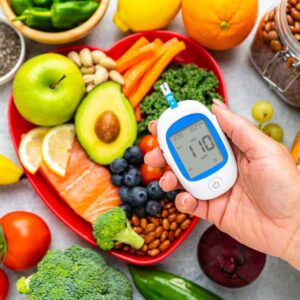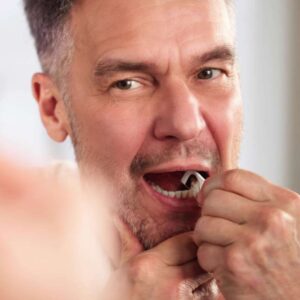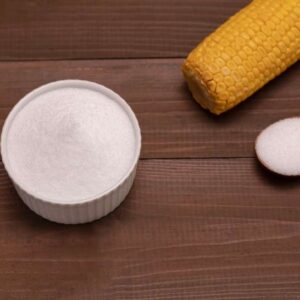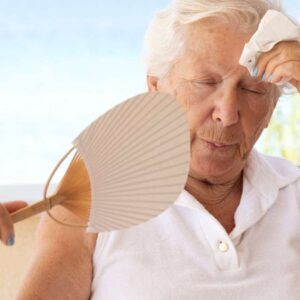
Avoid These Everyday Health Hazards
- Recycling may help the environment, but it won’t help your health!
- Find out what the government hasn’t done to protect your from these health destroyers
- Protect yourself and your loved ones with a few easy changes.
Dear Reader,
Have you ever thought about exactly what all those plastic disposable items in your life are made of?
Probably not. But you should.
And here’s the reason — some of these everyday items contain toxic chemicals ( BPA and phthalates may ring a bell) — linked to deadly disease like diabetes, obesity, and even cancer.
Who knew? For a long time, I sure didn’t.
I just cruised through my days full of single-packed food items, disposable cups, plastic shopping bags, cheap food storage containers, cans of chickpeas, and countless drinking straws — never knowing the real dangers.
In fact, the plastic waste from these items was my only concern — so I always recycled. I thought, like many, that if I did my part to keep plastic out of the environment, it was a perfectly safe for daily use.
Don’t get me wrong, I did have a hunch that plastic was probably risky just by its synthetic stench, but at the time, I wasn’t well informed about the health dangers.
But as research shows, my hunch was right.
BPA, a chemical component of plastic, is a long-suspected health culprit. Yet BPA isn’t the only hazard leaking out of your plastic convenience items.
And, to make things worse, even BPA-free plastics are just as dangerous — we will get to that later.
The good news is there is a surefire way to prevent exposure to these chemicals, which I will explain in a bit.
First, let’s find out what these vitality-crushing chemicals are up to in your body.
![]() Scary Synthetics
Scary Synthetics
Plastics consist of several synthetic chemicals — the worst two are bisphenol A (BPA) and phthalates.
Over the past few decades, BPA has been linked to negative health effects like diabetes, cancer, obesity, and reproductive issues.1
BPA ruins your health because it acts as an endocrine disrupter in your body by producing estrogenic activity. This means BPA signals the body’s hormones incorrectly and can interfere with metabolism, fertility, and the immune system1.
BPA is often part of the manufacturing process for plastics and resins, including the manufacturing of coated cans, bottles, and other types of food packaging —the items of everyday life.
In 2012, the FDA reluctantly passed a regulation banning BPA from being usedo baby bottles, sippy cups, and infant formula packaging.
The FDA claims this this action was only due to the urging of the chemical industry’s chief trade association, the American Chemistry Council, and not due to safety issues with this product.2,3
In fact, the FDA’s deputy commissioner for foods, Michael Taylor, reported the decision “simply codified what the industry was already doing based on the preference of consumers and did not reflect concerns about the safety of BPA in baby bottles or toddler’s cups.” Taylor went to say, based on evidence, “We continue to support its safe use in other materials.”3
If the government feels it needs to protect children from BPA, why would it leave out the rest of the population? Why would the FDA allow this chemical to be in any product?
Especially food storage and serving items.
But the bad news just gets worse…
Meet BPA’s equally terrifying counterpart, phthalates.
Phthalates are chemicals used as plasticizers (chemicals that make compounds softer and more flexible) in many household products, including cosmetics, detergents, carpets, pesticides, shower curtains, furniture materials, and car interior parts — this stuff is everywhere.
And of course, phthalates can be found in our food and water sources — either by way of processing (think plastic tubing used in milk processing) or through contacts with disposable food and beverage containers.
Like BPA, phthalates are also endocrine disruptors shown to interfere with reproductive and metabolic functions. Diabetes, lower levels of testosterone, and obesity are all potential hazards of exposures.4,5
But here’s the truly alarming part– phthalates are so common that 95 percent of Americans have detectable phthalate levels in their urine.6
In 2009, the Consumer Product Safety Commission banned the use of phthalates in children’s toys, but once again, the FDA took no action against this toxic swill in other common plastic products or cosmetics.7
However, they did issue a guidance on limiting the use of specific phthalates, dibutyl phthalate (DBP) and di(2-ethylhexyl) phthalate (DEHP), in the pharmaceutical industry.
To be clear, this is not a ban of these two phthalates in pharmaceuticals, but rather a suggestion that companies should stop using them in drug products. 8
![]() Ditch the Danger
Ditch the Danger
Obviously, you can’t depend on the government to protect your health from these hazards, so here is one solid way to prevent exposure:
Avoid them.
Here’s a few easy tips to get you started:
- Ditch all of your cheap plastic food storageware and invest in glass or stainless products
- Carry your own cotton grocery bags
- If you have to purchase plastic, choose items that are listed as BPA and phthalate free on the packaging or look for the plastic codes on items —recycling codes 1, 2, and 5 indicate plastics manufactured without BPA or phthalates
- Look for BPA-free can foods. There is a list of reliable brands here.
And one final warning — never heat foods or beverages in plastic containers — even plastics manufactured without BPA or phthalates.
A study published in Environmental Health Perspectives found that when exposed to heat:
Almost all commercially available plastic products we sampled — independent of the type of resin, product, or retail source — leached chemicals having reliably detectable estrogenic activity, including those advertised as BPA free. In some cases, BPA-free products released chemicals having more estrogenic activity than did BPA-containing products. 9
While these practices may make your life a bit less convenient, they may help you maintain your health.
Live well,

Natalie Moore
Managing editor, Living Well Daily
Ed. Note: Please send your feedback: nmoore@lfb.org – and click here to like us on Facebook.
Sources
[1] Endocrine disruptors and reproductive health: the case of bisphenol-A.
[3] F.D.A. Makes It Official: BPA Can’t Be Used in Baby Bottles and Cups
[6] Study finds moms share phthalates with their babies.
[7] United States Environmental Protection Agency
[8] Legislators Call for FDA to Further Restrict Use of Phthalates in Medicines, Citing Risks
[9] Most Plastic Products Release Estrogenic Chemicals: A Potential Health Problem That Can Be Solved
Written By Natalie Moore
Natalie Moore is a dedicated health researcher with a passion for finding healthy, natural, and science-based solutions. After a decade of direct healthcare experience in western and natural medicine, she was involved in public health research before joining Living Well Daily.
View More Free Articles
Stop Obsessing Over Diet Trends
Can we stop with the endless diet debates already? Every other week there’s a new headline shouting about which diet is best for weight loss, heart health, or diabetes. Paleo, keto, low-carb, high-protein… it’s exhausting. And now, a new meta-analysis is out comparing the Mediterranean diet, the DASH diet, and something called AHEI (that’s “Alternative...
A New Reason to Ditch Processed Junk
If you’ve ever walked the inside aisles of your local grocery store and thought, “This is all just junk,” your instincts were spot on. A new study published in the journal Thorax just added another red flag to the list of dangers linked to ultra-processed food—a 41 percent higher risk of lung cancer. That’s right....
When Being Winded on Stairs Is Serious (And When It Isn’t)
I had an athlete visit me recently because he experienced shortness of breath while climbing stairs. He is in great shape, so he was worried about what it might mean. “Doc,” he said, “I run five miles three times a week. Why am I huffing and puffing after two flights of stairs?” His concern is...
Study EXPOSES Hidden Danger Lurking in Your Car
We think of our homes and cars as safe havens. But according to a startling new study, they may be flooding your lungs with microscopic plastic particles—every single day. Researchers in France recently found that adults inhale an average of 68,000 microplastic particles daily from indoor air alone. To put that in perspective, that’s about...
Mailbag: Is Modern Food Making You Snore?
“What can cause snoring, and is there a way to correct this issue?” —Seeking Silence Hi Seeking, Snoring happens when the soft tissues in your throat relax and vibrate as air passes through during sleep. While several factors can cause snoring—from sleep position to nasal congestion—I want to share one trigger that might surprise you....
Simple Food Swap SLASHES Dementia Risk 28%
Let’s be honest… who would jump at the chance to cut their dementia risk by 28 percent. And no, you don’t need to run marathons, survive on broccoli, or learn to play the zither (whatever that is) to make it happen. All it takes is one easy swap—something that’s probably already in your refrigerator. Researchers...
This SMART Floss Exposes Hidden Health Danger
Scientists have created dental floss that doesn’t just clean between your teeth—it also tracks your stress while you’re flossing. Now, I know what you’re thinking… “Great—now even flossing is going to stress me out by telling me how stressed I am.” But this fascinating new tool from Tufts University could be a game-changer for understanding...
Is This "Safe" Sweetener Damaging Your Brain?
The headlines are alarming… “Popular Sugar Substitute Linked to Brain Cell Damage” and “Erythritol Could Damage Critical Brain Barrier” are just two of the dozens I’ve spotted recently. But before you toss every sugar-free product in your pantry, let’s take a closer look at what this study actually shows—and what it doesn’t. The latest research...
This Summer Threat Could SPIKE Your Blood Sugar
Picture this… It’s another scorching hot summer day. You crank up the air conditioning while watching the weather forecast, which predicts yet another “record-breaking” heat wave. It’s starting to feel like just another miserably uncomfortable summer. But what you might not realize is that—if you have diabetes—those rising temps could do far more damage to...
Move Over Yogurt—5 Foods That Pack MORE Probiotics
Let’s talk about your gut. The microbiome is the collection of trillions of bacteria and other tiny organisms that live in and on your body—especially in your gut—and help keep you healthy. I’ve written often about how vital it is to maintain a healthy microbiome. And you might have dutifully added yogurt to your shopping...









